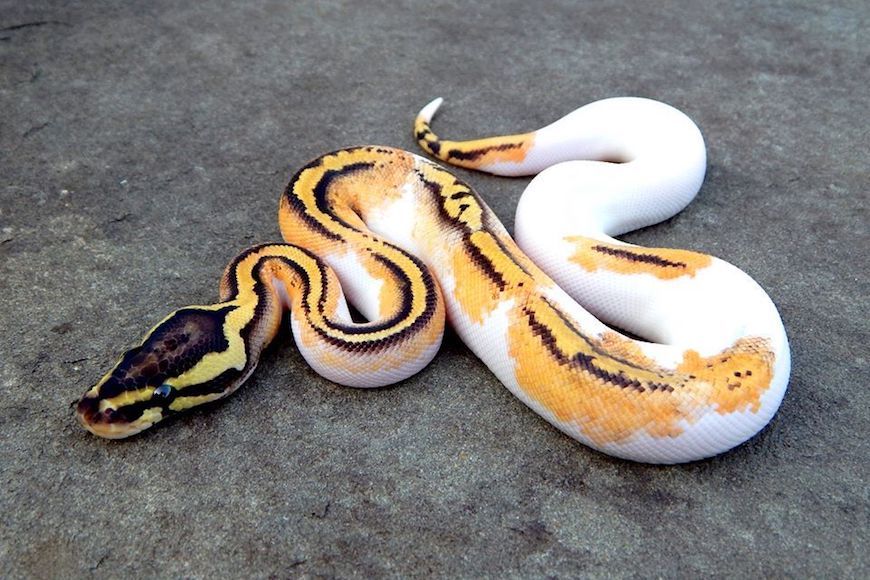When you think of genetics research, what animals first come to mind? Fruit flies? Mice? Our understanding of genetics is defined by a small number of model organisms—the ones used to study a particular biological phenomenon because of how similar their genes are to humans.
Mice are the most common model animal, while reptile species have been largely ignored in genetics research. . Because our slithery friends have been left by the wayside, researchers needed to get creative with their data collection. In a recent study, McGill scientists turned to hobby breeders to help fill the knowledge gaps in understanding the genetic basis for the distinctive colour patterns in ball pythons.
In the field of genetics, the ultimate goal is to connect a genetic profile, a genotype, to a specific physical characteristic, a phenotype. The genetics of colouration, the variation in colour and pattern between animals, are a popular target for genetic studies because of how easy it is to observe changes caused by mutations.
“[Colour variance is a] trait of ecological evolutionary relevance, and one that’s relatively easy to study,” said professor Rowan Barrett, interim director of McGill’s Redpath Museum and one of the authors on the paper, in an interview with The McGill Tribune.
Barrett, who is also the Canada Research Chair in Biodiversity Science, and his team were specifically interested in the genetic origins of piebaldism in ball pythons, a colour pattern where snakes have large blotches of white scales offset by brown-green hue.
In animals, colour is determined by a cell type called a chromatophore. Mammals and birds have one type of chromatophore called melanocytes, which produce the brown and black pigment melanin. Reptiles, however, have multiple types of chromatophores: Melanocytes, xanthophores, which make yellow to orange pigments, and iridophores, which have crystals that determine colour via structural correlation—when the microscopic structure of a crystal changes how light reflects off a surface to determine its colour.
However, studying pythons presented a problem: There just isn’t as much data on snakes as there is on mice. So the researchers turned to a group that did collect that kind of data: Private breeders of ball pythons.
Commercial ball python breeders keep extensive records of the lineages of their snakes to breed for rarer, more valuable colour patterns.
“The colour morphs the pet hobbyists have created are an amazing catalogue of variation,” Barrett said. “[It] would have taken decades [for us] to develop all the different morphs used in the study.”
Python breeders provided samples of snakeskin, which were sequenced and analyzed by the Barrett lab. By analyzing the sequences and the data from the breeders, the researchers found that piebaldism was correlated with a mutation that renders the TFEC gene, a transcription factor involved in gene expression, non-functional.
Determining whether the TFEC mutation directly caused piebaldism would require the deletion of TFEC from pythons to see what effect its knock-out would have. Unfortunately, the technology required to edit genes in snakes does not yet exist. Instead, the researchers used brown anole lizards, the only reptiles to be successfully modified using the CRISPR system.
The modified lizards showed reduced pigmentation in their skin and black eyes, suggesting they lacked iridophores but retained melanophores. Meanwhile, the eyes of unmodified lizards had iridophores but not melanophores, indicating that TFEC could be required for iridophore development.
Because of the huge potential for variation in non-traditional model animals, working with breeders and enthusiasts could be key to filling the gap between genotype and phenotype and unlocking the genetic secrets of nature.









